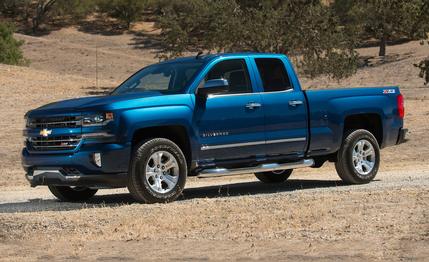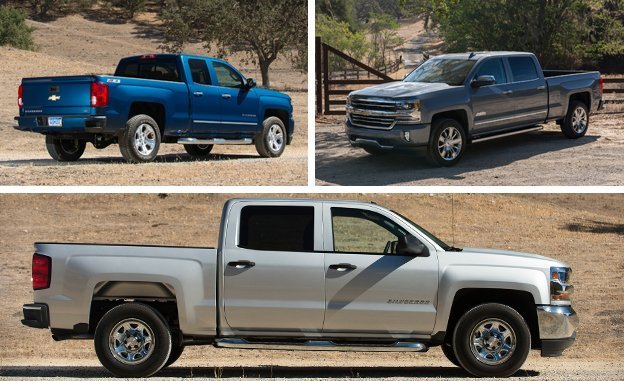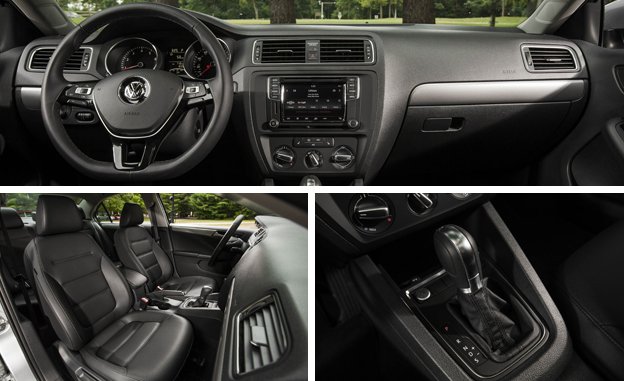
 First Drive Review
First Drive Review
“This is a truck that’s easy to embrace. It knows what it wants to be.”
That is the final line in our entry for the 2015 Chevrolet Silverado in a recent four-truck comparison test, a test in which the Chevy finished second behind only Ford’s newer F-150. As we’ve been saying since the truck debuted for 2014, the squared-off, steel-bodied, leaf-sprung Silverado, on paper, is completely unremarkable. And yet somehow, the assemblage of its entirely unexotic components is something more. For 2016, the Silverado retains its simple hardware but gets a new face, expands the availability of its optional eight-speed automatic transmission, and adds Apple CarPlay integration.


If that list of updates sounds comprehensive, it really isn’t. Besides a newly topographical hood—with more creases stamped into it than seemingly every other body panel combined—and the loss of its stacked headlights, the 2016 looks the same as the 2015. Inside, there’s nary a hint of disturbance, with the dashboard, steering wheel, and seats carrying over unchanged. As we mentioned, there is Apple CarPlay (Android Auto integration joins the party in a few months), and it’s operated via the uplevel 7.0- and 8.0-inch MyLink touch screens. The look of the screens is familiar, although they now share internal hardware with the upgraded units in the 2016 Malibu, which means they respond more quickly to inputs than before.
Really, the only notable mechanical change is the migration of the 8L90 eight-speed automatic transmission from the 6.2-liter V-8 engine to certain Silverado trim levels with the 5.3-liter V-8. So far, only the LTZ and the High Country models with the smaller engine get the eight-speed—everything else, including the base V-6, uses the old six-speed unit. Although we’re okay with the 2016 refresh’s overall cautiousness, this is one area where Chevrolet needed to go further. The old six-speed is slow to downshift (once its electronics register a kickdown at cruising speed, it momentarily engages fourth before pausing and belatedly grabbing third), and with fewer gears it holds onto lower ones longer even under light throttle applications. The eight-speed’s wider ratio spread and quicker shifts allow for spirited acceleration using lower engine speeds, surely a boon to real-world fuel economy; kickdown requests are met with a lower gear and far less hesitation.
Chevrolet says the only other mechanical changes address IIHS’s new narrow-offset frontal crash test. There is more structural sheetmetal tied to the base of the A-pillars and integrated into the front of the rocker panels to limit footwell intrusion during the tough narrow-offset test. The additional material adds some stiffness to the structure, which spurred the engineers to retune the truck’s dampers. An engineer told us, however, that an identical suspension feel was targeted; as he put it: “You’re not supposed to notice” the changes. That’s all well and good, because the Silverado already boasts the best ride-and-handling balance in the full-size-truck realm, with well-controlled body motions, a firm but not punishing ride, and relatively sharp steering. And can other truck manufacturers please benchmark the Chevy’s brake-pedal feel? Firm and responsive, it’s a far cry from the mushy and overboosted units in other pickups.


We like the Silverado’s new face, too, even if it’s only window dressing on an otherwise unchanged rig. The thin, projector-beam headlights are standard on every model, and upper trim levels wear LED jewelry. With the stacked headlights gone, the front end appears lower and wider; it’s handsome, even if cleaning every nook on the undulating hood will require a step stool and the wingspan of an NBA forward.
Once again, Silverado buyers face a nearly limitless set of body and drive configurations, but the basic trim-level structure remains. There are the Work Truck, LS, LT, LTZ, and High Country versions, as well as regular-cab, double-cab, and crew-cab bodies and myriad bed choices; two-wheel drive is standard, four-wheel drive is optional. In order to get Apple CarPlay, Android Auto, and Chevy’s onboard OnStar 4G LTE data connection and Wi-Fi hot spot, buyers need only shell out $27,850 for a base Work Truck, plus an additional $435 for the optional 7.0-inch MyLink touch screen.
That sort of technology democratization with the eight-speed transmission would give Chevrolet at least one hardware talking point to throw up against Ram’s air suspension and across-the-board eight-speed transmission and Ford’s aluminum bodywork and turbocharged EcoBoost engines. It also would give the base 285-hp 4.3-liter V-6, a competent and powerful engine choice apparently being ignored by customers drunk on cheap gas, a better chance of breaking through. Even so, as it sits, the Silverado remains a truck-guy’s truck, with an upright dashboard boasting a full array of analog gauges monitoring all manner of engine parameters—and an elegant simplicity not present in the more forward-looking Ram 1500 and Ford F-150. The Silverado is an honest tool, simple and effective. Need a full-size pickup be anything more?